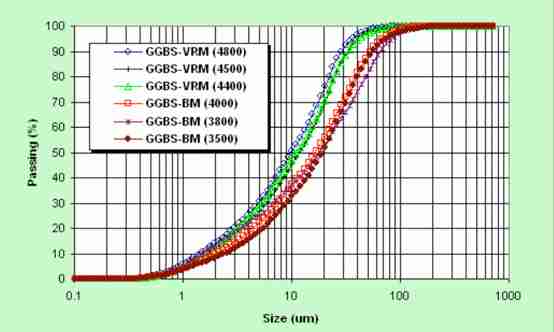17 Feb,2016 UTC+8 Views:
Granulated blast furnace slag has been used as a component of blast furnace cement for many years. The replacement of a certain clinker portion by blast furnace slag saves raw materials and thermal energy for pyroprocessing. Ingo Engeln from Polysius AG gives an overview of the Asian slag market and the use of vertical roller mills in China and South Korea.
Granulated blast furnace slag, a by-product of pig iron production, has been used as an important component of blast furnace cement for many years, due to its latent hydraulic properties.
The replacement of a certain clinker portion by blast furnace slag does not only mean to save raw materials and thermal energy for pyroprocessing, but also provides for advantageous characteristics of the blast furnace cements:
Low heat of hydration helps to prevent cracks in the concrete due to temperature stresses,
High resistance against sulphate attack,
High resistance against alkali-aggregate reaction,
High binding capacity of chlorides in blast furnace slag cement pastes,
The low electrical conductivity of concrete made with blast furnace cement resulting in a positive effect on the corrosion protection of the concrete reinforcement.1,2
Intergrinding - separate grinding
For a long time, the applicable standards allowed cement clinker and granulated blast furnace slag to be ground together in tube mills, but especially by utilisation of tube mills the clinker mainly accumulates in the fines fraction, while the granulated slag accumulates in the coarse range (Figure 1).

Because the proportion of pulverised blast furnace slag predominates in the blast furnace cement, the slag can only inadequately participate in the hydration as a result. The consequence is loss of quality. Intergrinding in roller mills provides very similar particle size distributions for clinker and slag and thus provides a better quality of the blast furnace cement.3
The results based on studies by Schwiete and Dölbor in 1963 already show the positive influence on the strength development of cements when grinding granulated blast furnace slags to high finenesses (Figure 2).4

Therefore, it is an indisputable fact that it is necessary to grind the granulated blast furnace slags to high finenesses in order to generate good strength properties. The intergrinding of clinker and granulated blast furnace slag inevitably necessitates the energetically unfavourable grinding of the clinker to higher finenesses as necessary. The only way to avoid this is to grind clinker and slag separately.
For the design of a slag grinding plant the special properties of granulated blast furnace slag have to be considered. Granulated blast furnace slag is moist, abrasive, fine grained and difficult to grind. It also needs to be ground very finely. There are several grinding systems on the market meeting the requirements for slag grinding, but no other grinding system has gained so much importance during the last decade as the vertical roller mill.
Vertical roller mill
Fig. 3 shows the vertical roller mill. The essential components of the Polysius roller mill are the grinding table, the two pairs of rollers, which can move vertically as well as rotationally around the guide axles, the housing, the adjustable nozzle ring, the drive unit with motor, and the separator.

Features of vertical roller mill
The double-grooved grinding track uses a defined gap between the rollers and the grinding track to prevent the material from flowing out at the sides. This reduces the specific power consumption. The grinding rollers can move in the vertical direction and follow the wear profile, ensuring an even wear profile and a constant material bed thickness. Each grinding roller can also be twisted through 180°, i.e. the inner roller can become the outer roller, so the wear profile, and hence the throughput, remain virtually constant over the entire running period. This minimises internal recirculation in the mill and stabilises the material bed. It reduces the gas velocities in the nozzle ring and thus saves energy. It is best if used in conjunction with the external material circuit.
The vertical roller grinding mill has used a bucket elevator from the outset for returning the recirculation material. This reduces the amount of air-borne recirculation within the mill, which lowers the pressure loss and improves the smooth running of the mill. The bucket elevator is also a great help dur-ing maintenance work.